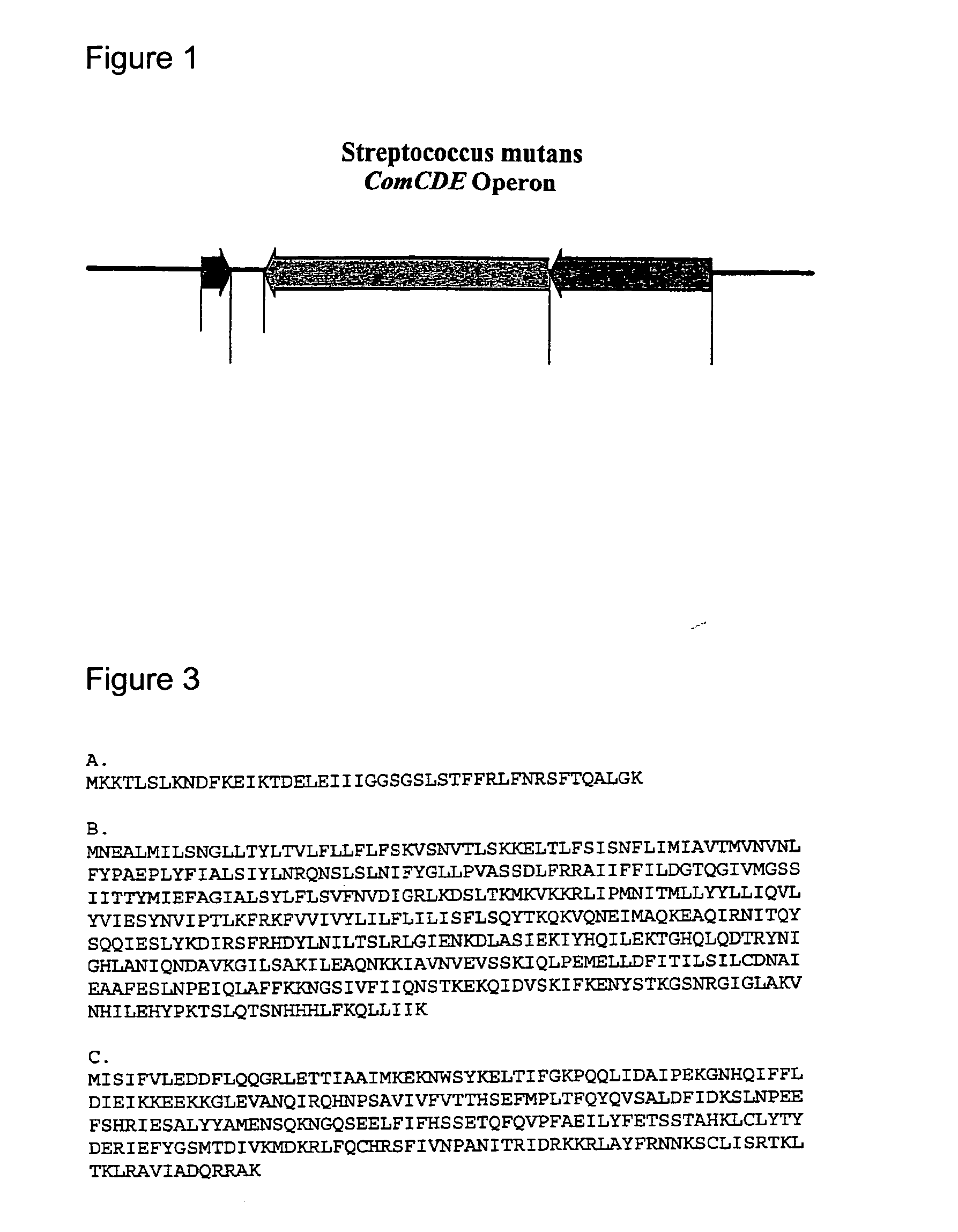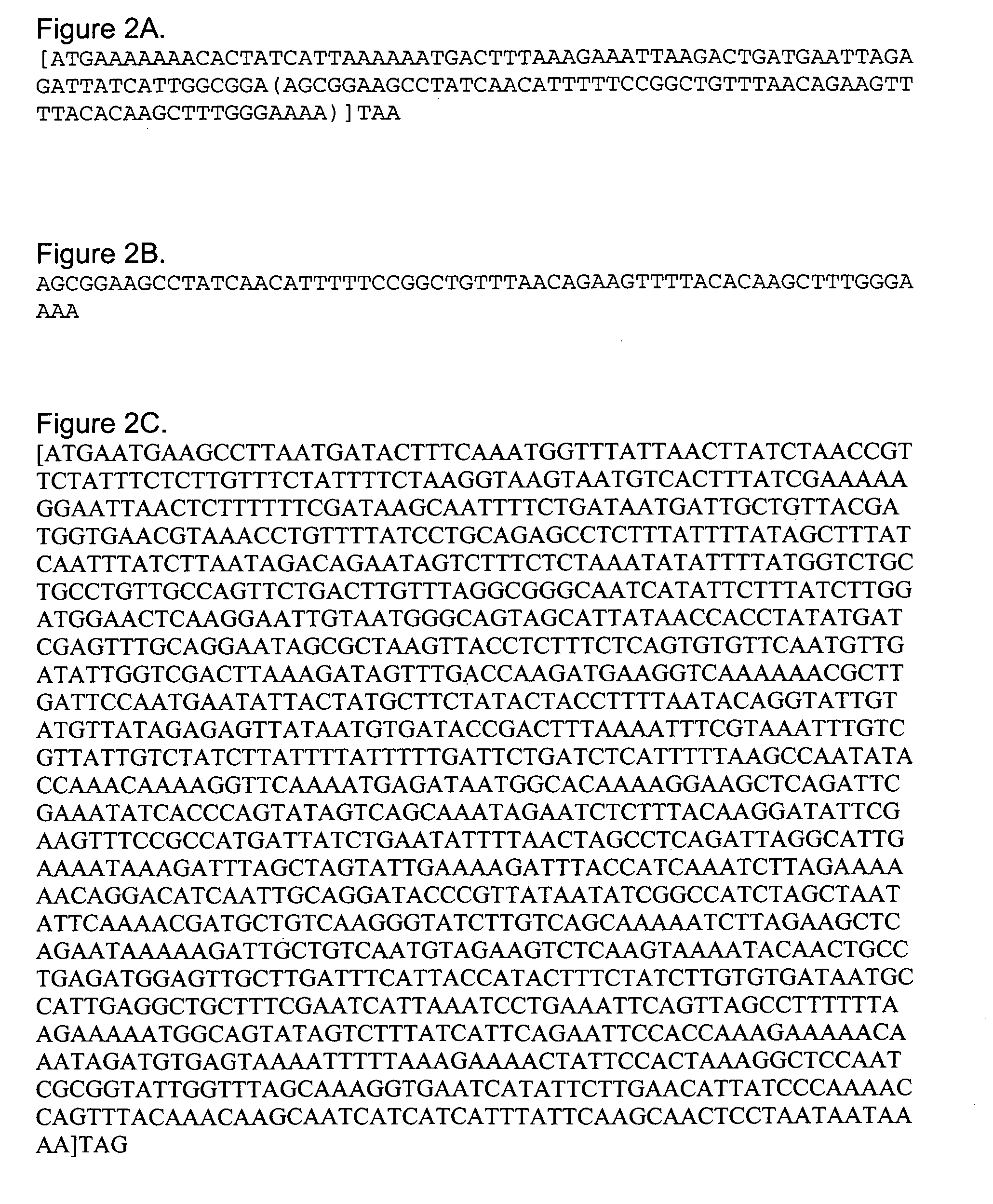Signal peptides, nucleic acid molecules and methods for treatment of caries
a technology of nucleic acid molecules and signs, applied in the field of signal peptides, nucleic acid molecules and methods for treating caries, can solve the problems of chronic infections and device fouling, and none of the known types of i>s. mutans /i>antibiotics has satisfactorily controlled caries, and achieve the effect of improving dental health
- Summary
- Abstract
- Description
- Claims
- Application Information
AI Technical Summary
Benefits of technology
Problems solved by technology
Method used
Image
Examples
Embodiment Construction
[0028] In some Gram-positive bacteria (including Streptococcus mutans), when a specific histidine kinase receptor located in the cell membrane is disrupted, the cells become ineffective at developing a biofilm. The cells growing in this biofilm environment use a small peptide signal molecule to activate the receptor in surrounding cells, thereby communicating the message to form a biofilm. This same signal peptide and histidine kinase are also involved in the induction of genetic competence, the cell's ability to take up and incorporate DNA from its extracellular environment, as well as that of acid tolerance, the cell's ability to survive pH levels as low as pH 3.0. A mechanism that blocks the signal molecule from activating the histidine kinase receptor molecule provides a novel method for controlling microbial biofilms, either alone or in combination with chemical or physical means.
[0029] We have identified a genetic locus in S. mutans consisting of three genes that encode: 1) a...
PUM
| Property | Measurement | Unit |
|---|---|---|
| Fraction | aaaaa | aaaaa |
| Composition | aaaaa | aaaaa |
| Efficiency | aaaaa | aaaaa |
Abstract
Description
Claims
Application Information
 Login to View More
Login to View More - R&D
- Intellectual Property
- Life Sciences
- Materials
- Tech Scout
- Unparalleled Data Quality
- Higher Quality Content
- 60% Fewer Hallucinations
Browse by: Latest US Patents, China's latest patents, Technical Efficacy Thesaurus, Application Domain, Technology Topic, Popular Technical Reports.
© 2025 PatSnap. All rights reserved.Legal|Privacy policy|Modern Slavery Act Transparency Statement|Sitemap|About US| Contact US: help@patsnap.com



